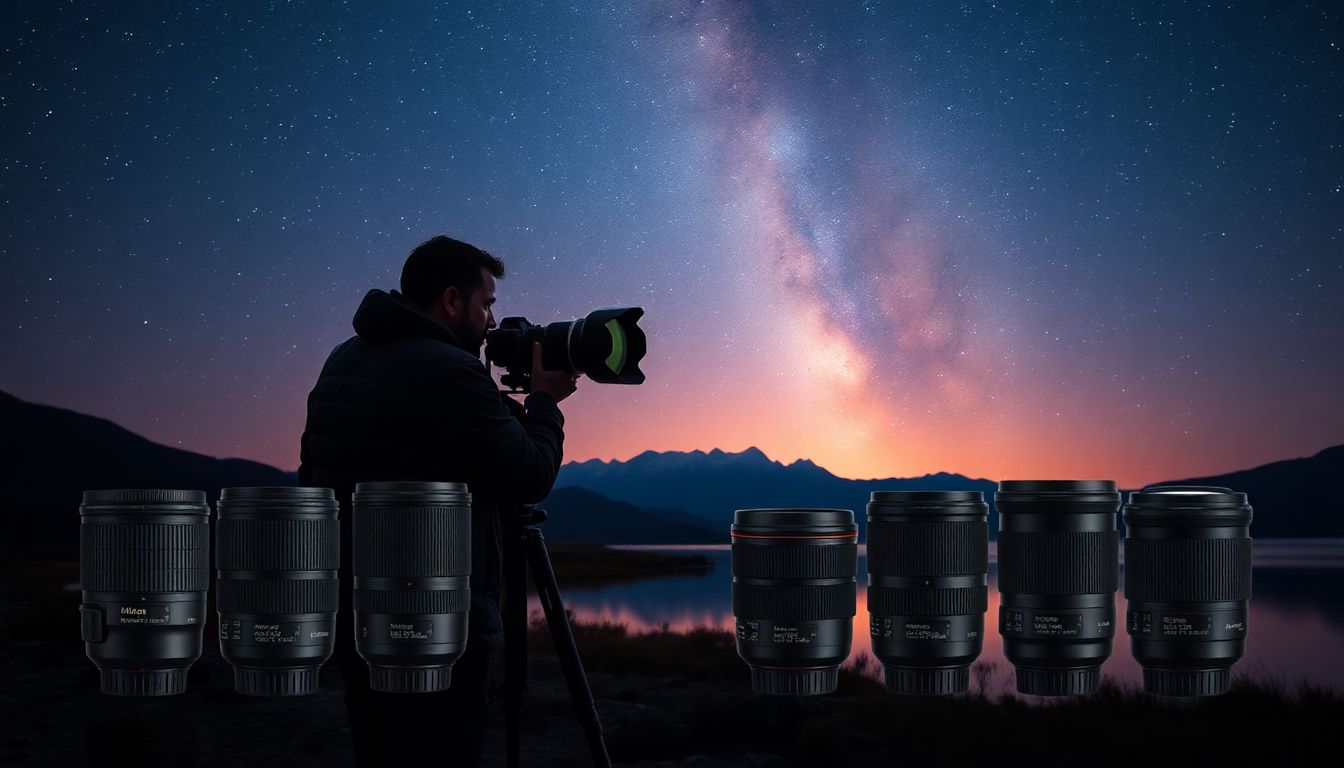
Top 5 Nikon Lenses for Capturing the Night Sky in 2025
Introduction
Astrophotography is catching on fast. More photographers want to snap stars, the Milky Way, and celestial events. But getting clear, sharp images isn’t easy. The right lens makes all the difference.
In 2025, Nikon has stepped up its lens technology. New features help you shoot stunning night sky photos even in dim light. Whether you’re a hobbyist or a pro, finding the perfect lens boosts your images. Good gear saves time and frustration, delivering results you can be proud of.
Why Choosing the Right Lens Matters for Night Sky Photography
Your lens impacts your photo quality big time. The key factors include focal length, aperture, and low-light handling. These features decide how much light your camera gathers and how sharp your stars look.
Using the wrong lens can lead to blurry stars, star trails, or noisy images. To avoid these problems, selecting a lens built for dark conditions is crucial. A top-quality lens makes shooting at night easier and produces better images with less editing.
Understanding Key Features for Astrophotography Lenses
Sensor Compatibility and Mounting
Always check if a lens fits your camera. Nikon offers F-mount for DSLRs and Z-mount for mirrorless cameras. These mounts have different features and advantages.
Choose lenses compatible with your gear. Most new Nikon lenses work with their latest models. For older cameras, make sure the lens attaches securely and provides full control.
Aperture and Light Gathering Ability
A wide aperture like f/1.4 or f/2.8 helps you collect more light. Larger openings let in more starlight, making your photos brighter and clearer. They also cut down on exposure time, which prevents star trails.
Lenses with big apertures handle night scenes better. They produce less noise and bring out details in faint objects. Think of aperture as the lens’s catching basket—bigger is better for starry skies.
Focal Length Considerations
Focal length influences how much of the sky you see. Wide lenses (14mm-24mm) cover vast star fields and the Milky Way. Telephoto lenses (70mm-200mm) focus on distant planets or nebulae.
For landscape shots blending sky and land, go for wide-angle lenses. For detail shots of specific objects, telephoto is your best choice. Your style determines your ideal focal length.
Optical Quality and Lens Coatings
High-quality optics minimize distortions, ghosts, and chromatic aberration. Good coatings like Nano Crystal reduce flare and reflections, especially when shooting toward bright objects like the moon or streetlights.
Look for lenses with superior optical glass and coatings. They deliver sharper images, better star points, and fewer post-processing fixes.
Top 5 Nikon Lenses for Night Sky Photography in 2025
1. Nikon Nikkor Z 14-24mm f/2.8 S
Overview: A versatile zoom perfect for starry landscapes. It offers a wide range from 14mm to 24mm, covering most night scene needs.
Key Features:
- Constant f/2.8 aperture
- Sharp across the zoom range
- Weather-sealed for outdoor shoots
Use It For: Wide Milky Way shots and expansive nightscapes.
Why It’s Great: Its sharpness and wide view make capturing the night sky’s vastness easier. Plus, the f/2.8 keeps it bright in low light.
2. Nikon Nikkor Z 20mm f/1.8 S
Overview: Prime wide-angle lens with a lens-opening of f/1.8. It gathers tons of light and gives sharp images.
Key Features:
- Excellent corner-to-corner sharpness
- Minimal coma for stars near the edges
- Fast aperture ideal for low-light
Use It For: Clear star points and Milky Way shots in challenging conditions.
Why It’s Worth It: Recognized by Nikon pros as top for astrophotos thanks to its bright, sharp optics.
3. Nikon AF-S NIKKOR 14mm f/2.8D ED
Overview: A classic DSLR lens for those still using Nikon F-mount cameras.
Key Features:
- Ultra-wide angle
- Bright f/2.8 aperture
- Robust build for tough conditions
Use It For: Classic astrophotography setups with Nikon DSLRs.
Note: It needs an adapter for newer mirrorless bodies but remains a favorite for many.
4. Nikon Nikkor Z 24mm f/1.8 S
Overview: A slightly narrower view but still super wide, with a fast f/1.8 for night shots.
Key Features:
- Crops less distortion
- Minimal coma and flare
- Excellent sharpness
Use It For: Milky Way scenes and deep-sky photography.
Pro Tip: Use stacking techniques with this lens for incredible detail.
5. Nikon Nikkor Z 70-200mm f/2.8 VR S
Overview: A telephoto zoom that excels at capturing distant celestial objects.
Key Features:
- Versatile zoom range
- Fast, stable f/2.8 aperture
- Built-in stabilization
Use It For: Moon, planets, and nebulae detail.
Example: Many astrophotographers use this lens for planetary and lunar shots due to its long reach.
Additional Tips for Optimal Night Sky Photography with Nikon Lenses
- Always focus manually and magnify live view for pin-sharp stars.
- Shoot in RAW files to unlock full editing power later.
- Use stacking and long exposures to get more detail and less noise.
- Keep your lenses weather-sealed and protected from dew and dust.
Conclusion
Choosing the right Nikon lens is the secret to breathtaking night sky photos. In 2025, top options like the Nikon Z 14-24mm f/2.8 and Z 20mm f/1.8 stand out for their low-light capabilities and sharpness. Whether you’re capturing the sweeping Milky Way or distant nebulae, the right lens makes all the difference.
Think about your specific needs and camera compatibility. Investing in quality optics pays off in clearer, more stunning images. With the right gear, you can turn your night sky dreams into beautiful realities. Start exploring the stars with confidence today.

